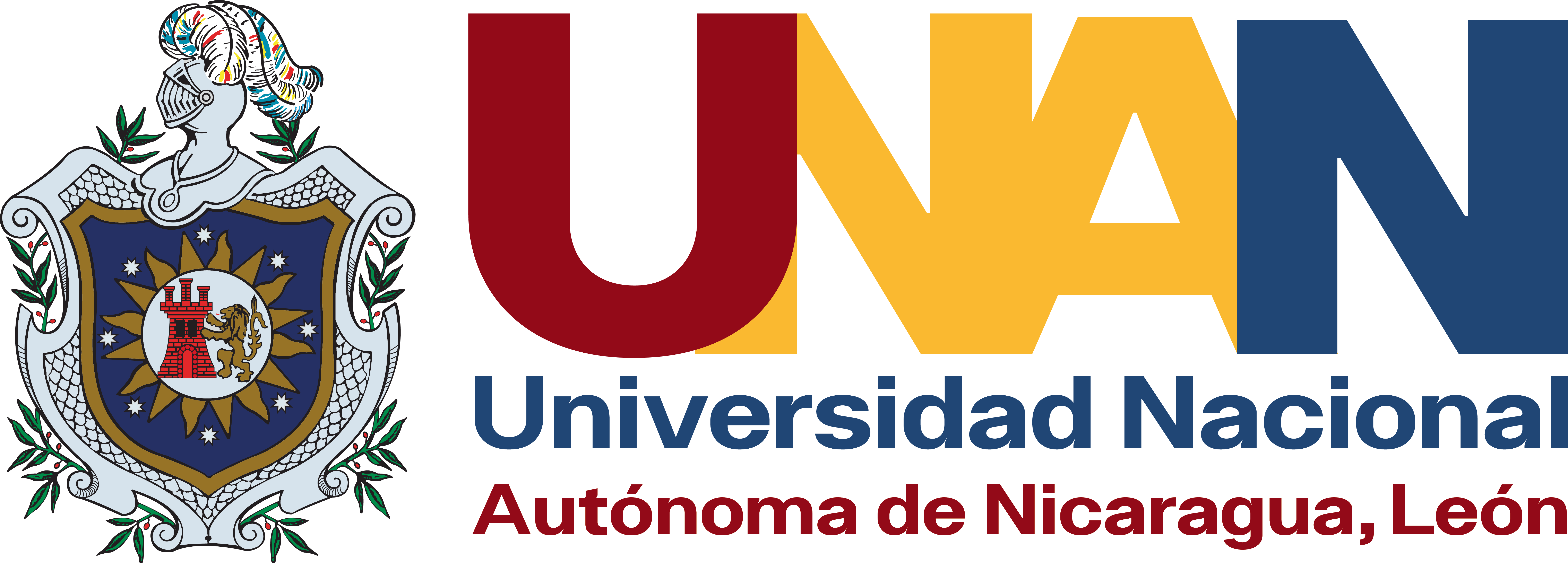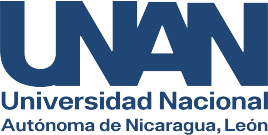Measurement of the contribution of the Bioeconomy: Nicaragua Case
DOI:
https://doi.org/10.5377/universitas.v5i1.1479Keywords:
Bio-based economy, Bio-economy, National Accounts SystemsAbstract
This research focuses on measuring the bioeconomy of Nicaragua using the Canadian approach of the bio-based economy, following the sub-categories of the North American Industrial Classification System (NACIS). The data and records available in the Central Bank of Nicaragua registered in the National Accounts System were used to standardize the subcategories of NACIS and the International Standard Industrial Classification (ISIC) revision 3 of the United Nations, which allowed standardizing the main components of the economy. bio-based. The reference base year was 1994 for the period 1994-2000 and 2006 as the reference year for 2006-2007. The results show that the Bioeconomy contributed to the GDP by 28% during the period 1994-2000, while during the new reference year 2006 an average of 7% was estimated, consistent with Pellerin's estimates. Of the main components, the organic chemical industry stood out with 74% and 75%, respectively, during the 2006-2007 period. In second order the component of agriculture and crop activities with a contribution of 22%, for the period 2006-2007, but represented the first order for the period 1994-2000 and the component of health, medical and pharmaceutical industries represented a contribution of 24% during the period 1994-2000, but not so for the following period, which, like food and beverage bio-processes, have a low contribution.
Downloads
References
Ahmad, M., Bravo-Ureta, B. (1996). Technical efficiency measures for dairy farms using panel data: a comparison of alternative model specification. J Prod Anal, (7), 399-415.
Aigner, D.J., Lovell, C.A.K. & Schmidt, P. (1977). Formulation and Estimation of Stochastic Frontier Production Function Models. Journal of Econometrics, (6), 21-37
Brambila Paz, José de Jesús (2011). Bioeconomía: Instrumentos para su análisis económico. Secretaría de agricultura, ganadería, desarrollo rural, pesca y alimentación (SAGARPA). Av. Municipio Libre 377. Col. Santa Cruz Atoya, Del. Benito Juárez, C.P02210, México, D.F. ISBN: 978-607-7668-05-3. contacto@sagarpa.gob.mx: brambilaa@colpos.mx Tel: 01 (55)38711000.
Bravo-Ureta Boris E., (2010). A farm Level Analysis of the Economic Impact of the MARENA Program in Honduras, Selected Paper prepared for presentation at the Southern Agricultural Economics Association Annual Meeting, Orlando, FL, February 6-9, 2010.
BCN (1994)."Sistema de Cuentas Nacionales: Año Base 1994. Gerencia de Estudios Económicos. Banco Central de Nicaragua. Sitio de internet: www.bcn.gob.ni. Páginas 25-29 y 32-35.
BCN (2006). Documento Metodológico Principal Sistema CNN. Sistema de Cuentas Nacionales de Nicaragua: Año de Referencia 2006.. Páginas 3-12 y 43-44. División Económica Banco Central de Nicaragua Sitio de internet: www.bcn.gob.ni Fax: 2265 1246. Apartado postal 2252, 2253. Managua, Nicaragua. Publicado y Distribuido: Banco Central de Nicaragua.
Coelli, T. J., L. Lauwers, & G. Van Huylenbroeck. (2007). "Environmental Efficiency Measurement and the Materials Balance Condition", Journal of Productivity Analysis, 28:1, pp.3-12.
CEPAL-GTZ (2011). Estudio sobre economía de los biocombustibles 2010: Temas clave para los países de América Latina y el Caribe. Páginas 14 a 17.
CEPAL (2008) Aporte de los biocombustibles a la sustentabilidad del desarrollo en América Latina y el Caribe: Elementos para la formulación de políticas públicas. Páginas 10, 38-42
CEPAL. (2007) Biocombustibles y su impacto potencial en la estructura agraria, precios y empleo en América Latina. Centre for the Study of Living Standars (SSLS), (2011). Measuring the contribution of modern biotechnology to the Canadian Economy. CSLS Report Report 20011-18.
Efkena Josef, Dirksmeyerb Walter, Hansenc Heiko, Kreinsd Peter and Rothee Andrea (2012), Measuring the Importance of the Bioeconomy in Germany: Concept and Illustration.
Ernst & Young (2000) The economic contributions of the biotechnology industry to the U.S. economy. https://www.convention.bio.org/speeches/pubs/ernstyoung.pdf
Fernández González, Luis (2006). Análisis económico de precios del bioetanol para mezclas con gasolinas. Naciones Unidas. CEPAL.
Genoma España (2005), Spanish biotechnology: economic impact, trend and perspectives, Madrid: Genoma España. https://www.lifesciencesbc.ca/files/PDF/SPA_BIOTECH.pdf
Hevesi, A., & Bleiwas, K. (2005) The economic impact of the biotechnology and pharmaceutical industries in New York, New York, N.Y: Office of the State Comptroller. http://www.nyba.org/WYSIWYGImage/file/biotechreport.pdf
Ingeniería Sin Fronteras Asociación para el Desarrollo (ISF), (2011). La incidencia de los biocombustibles en los países del sur: Estudios de caso en Perú, Tanzania y Nicaragua. Paginas consultadas 52-77.
Martín, Aitor Lizarta., Etxeberría Iñazio Irizar (2006), Panorama internacional de la biotecnología desarrollo de un biocluster en el País Vasco. Revista vasca de economía, ISSN 0213-3865, Ekonomiaz No 62, (2) 2006, Dialnet.
Mohammadian, Mansour. (1997). Bioeconomics: Interdisciplinarity par Excellence. International Society for Interdisciplinary Studies: The Vienna Forum. Sciences and Social Interactions: Can Interdisciplinarity Bridge the Gap?. 16-17 November, Vienna. Austria.
Mohammadian, Mansour (2004). La Bioeconomía: Un nuevo paradigma socioeconómico para el siglo XXI. Journal of Interdisciplinary Economics. Volume 17 (4): 1-12.
Medina López, Ana (2012), Análisis del impacto de la inversión en investigación y desarrollo mediante modelos multisectoriales como vehículo para implantar la bioeconomía en la comunidad de Madrid. UNIVERSIDAD REY JUAN CARLOS DE MADRID. Facultad de Ciencias Jurídicas y Sociales Departamento de Economía Financiera y Contabilidad II. Tesis doctoral.
Pellerin, William., & Taylor D. Wayne (2008), Measuring the biobased economy: A Canandian perspective. Industrial Biotecnology. Vol 4 No 4. Pp 363-366.
Séruzier, Michel (2003), Medir la economía de los países, según el Sistema de Cuentas Nacionales. CEPAL, Alfaomega. ISBN: 958-682-512-4 Copyright Naciones Unidas 2003. Cepal con coedición con Alfaomega Colombiana S.A, 2003.
Trigo E.J., Henry G., Sanders J., Schurr U., Ingelbrecht I., Revel C., Santana C., Rocha P., (2013), Towards bioeconomy development in Latin America and the Caribbean, Bioeconomy Working Paper No.2013-01. ALCUE KBBE FP7 Project No. 264266, 15 р.
V. Vandermeulen and W. Prins and S. Nolte and G. Van Huylenbroeck (2011), How to measure the size of a bio-based economy: Evidence from Flanders. Journal Biomass and Bioenergy Vol 35 (10) pp 4368-4375. ISSN 0961-9534.
Zúniga González, Carlos Alberto (2011). Comparison of LSMS-ISA data collection and dissemnation efforts in Central America. Journal of Development and Agricultural Economics. Vol. 3 (9), pp 353-361, August, 2011.
Zúniga González, Carlos Alberto (2013). Total Factor Productivity and the Bioeconomy Effects. Macrothik Institute. Journal do Agricultural Studies. ISSN 2166-0379. Vol. 1. No 1, 2013.
Zika, E., & Papatryfon, I., & Wolf, O., & Gómez-Barbero, M., & Stein, A. J., & Bock, A.-K. (2007) Consequences, opportunities and challenges of modern biotechnology for Europe, Seville: Institute for Prospective Technological Studies (IPTS).
Downloads
Published
How to Cite
Issue
Section
License
Copyright (c) 2014 National Autonomous University of Nicaragua, Leòn

This work is licensed under a Creative Commons Attribution-NonCommercial-ShareAlike 4.0 International License.
Copyright © 2025 Universitas (León), Revista Cientifíca de la UNAN-León. Academic Direction. Research Department. Publication and Scientific Event Unit.










